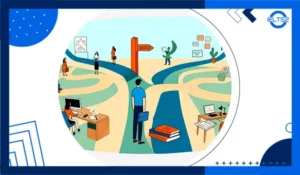نمونه سوالات اسپیکینگ آیلتس درباره خشونت (نمره 9)
در این بخش بیش از 20 مورد از نمونه سوالات اسپیکینگ آیلتس نمره 9 درباره “موضوع خشونت” را با هم میبینیم. این مجموعه از آخرین سوالات گزارش شده از سنترهای برگزار کننده آیلتس در ایران و خارج از کشور مربوط به پارت 1، 2 و 3 می باشند و شانس تکرار آن ها در آینده بالاست. در ادامه مطلب همچنین نکات گرامری، لغات و دلایل دریافت نمره 9 را به طور مشخص توضیح داده ایم تا راهنمایی برای علاقمندان باشد. 1000 نمونه سوالات اسپیکینگ آیلتس با جواب PDF پارت 1 2 3 پیشنهاد بعدی ما به شما عزیزان است.
نمونه سوالات اسپیکینگ آیلتس درباره موضوع خشونت (پارت 1)
Part 1: Questions and Answers (Violence)
- Do you think violence is a problem in your country? Yes, violence is a significant issue in my country. While violent crime rates may not be extremely high, there are frequent reports of domestic violence, gang conflicts, and even bullying in schools. It is concerning because violence often leads to long-term social and psychological damage, not only for the victims but also for the perpetrators. More efforts should be made to educate people about nonviolent conflict resolution and provide mental health support.
- How do people usually react to violence in your country? Reactions to violence vary. Many people express shock and outrage, especially in the case of violent crimes that make headlines. However, in some cases, people may become desensitized due to constant media coverage of violence. Public protests and calls for stricter laws are common reactions. Additionally, some individuals try to help victims directly, whether through physical intervention or by contacting the authorities. The overall reaction tends to reflect the severity of the violence involved.
- What are the main causes of violence in your opinion? I believe violence often stems from a combination of social, economic, and psychological factors. Poverty and lack of education can lead to frustration, which may manifest as aggression. Additionally, exposure to violence in childhood or through media can desensitize individuals to violent behavior. Mental health issues also play a major role, as individuals struggling with anger or trauma may resort to violence as a coping mechanism. Finally, societal inequalities can foster resentment, fueling violent actions.
- Do you think media influences violence in any way? Yes, media can significantly influence violence. While it’s important to note that not all media content is harmful, exposure to violent movies, video games, or news can desensitize people to violence. Young people, in particular, may be more impressionable, and repeated exposure to violent behavior can normalize it. However, it’s not just about content; how violence is portrayed can also affect the audience’s perception of its acceptability or consequences.
- Have you ever witnessed any kind of violence? Yes, I have unfortunately witnessed instances of verbal and physical violence. I once saw a public altercation where two individuals were shouting at each other and one became physically aggressive. It was a distressing experience, as the situation quickly escalated. It was difficult to intervene, but I did try to alert others nearby and encourage them to call the police. Witnessing such events makes you more aware of how quickly conflicts can turn violent.
- What kind of violence is most common in your area? In my area, domestic violence and street fights seem to be the most common types of violence. Domestic violence is particularly troubling because it often goes unnoticed, and victims may feel trapped or too afraid to seek help. Street fights, on the other hand, are usually a result of minor disagreements that escalate, often fueled by alcohol or peer pressure. Although violent crime is less frequent, these everyday occurrences can have a lasting impact on the community.
- Is there a lot of violence in schools in your country? Sadly, there is violence in schools, though it varies by location. Bullying, both physical and emotional, is widespread in some schools, and it can lead to severe consequences for the victims, including anxiety and depression. Some schools have attempted to address this issue by creating anti-bullying programs or providing counseling, but the problem persists. The rise of cyberbullying is also a growing concern, as it can affect students outside of school hours and be more difficult to control.
- How do you think violence could be reduced in society? To reduce violence, it’s crucial to address its root causes, such as poverty, lack of education, and mental health issues. Providing better access to education, job opportunities, and counseling services could help lower frustration levels and reduce the likelihood of violent behavior. Additionally, creating awareness campaigns that promote empathy, nonviolent communication, and conflict resolution skills is essential. Strengthening law enforcement and providing support for victims are also key steps in tackling violence.
- Do you think laws are enough to stop violence? Laws are necessary, but they are not enough on their own. While strict legal consequences can deter some individuals from committing violent acts, addressing the root causes of violence is just as important. Education, mental health care, and community programs are needed to prevent violence before it happens. Laws should also be enforced effectively, ensuring that violators face appropriate consequences. Ultimately, a combination of legal, social, and educational measures is required to reduce violence.
- How does violence affect communities? Violence can have a devastating impact on communities, leaving a lasting scar on both the victims and the wider population. It can lead to increased fear, mistrust, and social fragmentation. Economic consequences are also significant, as violent crime can harm businesses and reduce investment in affected areas. In the long term, communities may experience a breakdown in social cohesion, which makes it harder for individuals to feel safe or work together to solve shared problems.
نمونه سوالات اسپیکینگ آیلتس درباره موضوع خشونت (پارت 2)
Describe a time when you witnessed or experienced violence. You should say:
When it happened
What happened
How it affected you
What you think should have been done to prevent it
Answer:
A time when I witnessed violence occurred about three years ago when I was on my way home from work. I was walking near a local park when I saw two men arguing loudly. Their words quickly escalated into physical violence, with one man pushing the other to the ground. The scene was chaotic, and people around tried to intervene, but they were afraid to get too close. Eventually, someone called the police, and the situation was resolved.
The incident left me feeling deeply unsettled. I had never witnessed such an intense confrontation before, and the aggression was alarming. It was not just the violence itself, but also the sense of fear it instilled in the surrounding crowd. I found myself questioning how many similar situations occur every day without intervention and how people can become desensitized to the danger. It was disturbing to realize how quickly people can resort to violence over minor disagreements.
Looking back, I believe this situation could have been prevented in several ways. First, the argument should have been de-escalated before it turned violent. The presence of a mediator or a calm authority figure might have helped. Additionally, raising awareness about the negative consequences of physical violence could help individuals think twice before resorting to such measures. Schools and community organizations could play a key role in teaching conflict resolution skills and promoting peaceful communication. Preventing violence requires not only a reaction to the act itself but also proactive measures aimed at addressing the root causes of aggression.

نمونه سوالات اسپیکینگ آیلتس درباره موضوع خشونت (پارت 3)
Part 3: Questions and Answers (Violence)
- Do you think violent behavior can be learned? Yes, violent behavior can be learned. Individuals, particularly children, often learn through observation and imitation. If a child grows up in an environment where aggression is common or even rewarded, they may adopt similar behaviors. Media, such as violent video games or movies, can also influence behavior, especially if the content normalizes violence. However, it is possible for people to unlearn violent behavior through education, therapy, and supportive environments.
- How can violence affect people emotionally? Violence can have long-lasting emotional effects on both victims and witnesses. Victims often experience fear, anxiety, depression, and post-traumatic stress. They may struggle with feelings of helplessness or a loss of trust in others. Witnesses can also be affected, as seeing violence can cause emotional distress, leading to feelings of guilt, fear, or anger. Over time, exposure to violence can lead to desensitization, making individuals less sensitive to the emotional impact of violent acts.
- What role do schools play in preventing violence? Schools play a crucial role in preventing violence by educating students about the consequences of violent behavior and teaching conflict resolution skills. Many schools implement anti-bullying programs to create safer environments. It is also important for schools to foster emotional intelligence, teaching students to manage their emotions and respond to challenges in healthy ways. By encouraging empathy and respect for others, schools can reduce incidents of violence and create a more positive atmosphere.
- Should schools be responsible for addressing violence outside of school? While schools cannot be solely responsible for addressing violence outside of school, they do have a role to play in supporting students. Schools can provide resources, such as counseling or workshops, to help students who may be experiencing violence in their communities or homes. Additionally, schools can collaborate with parents, local authorities, and social services to address broader social issues that contribute to violence.
- What are the consequences of a violent society? A violent society can have numerous negative consequences, including a breakdown in social trust, an increase in fear, and a higher cost to public services. Families may be torn apart by violence, and communities may become fragmented. Economic consequences also arise, as violent crime can drive away investment, harm businesses, and reduce quality of life. Long-term, a violent society may struggle to build the cohesion needed for sustainable development and prosperity.
- Why do some people think violence is acceptable? Some people may think violence is acceptable due to cultural or social influences. In certain cultures, aggression or violent behavior may be normalized or even encouraged. Media portrayal of violence can also contribute to this mindset, especially when it’s depicted as a solution to problems. Additionally, individuals who have been exposed to violence in their own lives may believe it is an appropriate way to handle conflict, as they might have never learned nonviolent alternatives.
- How can governments help reduce violence? Governments can reduce violence by enacting and enforcing strictlaws against violent behavior and ensuring proper law enforcement. They can also invest in educational programs that teach conflict resolution, empathy, and nonviolent communication from a young age. Moreover, governments can provide mental health support and social services to address underlying issues that often lead to violence, such as poverty, trauma, and lack of opportunity. Additionally, public awareness campaigns can help shift societal attitudes toward nonviolent solutions and stress the importance of peaceful conflict resolution.
- Do you think violence will ever completely disappear? While it is unlikely that violence will ever completely disappear, it can be significantly reduced with consistent efforts. Achieving a violence-free society is difficult because violence is often rooted in deep social, economic, and psychological factors. However, with the right policies, education, and community support, we can create environments that discourage violent behavior and offer healthier ways to resolve conflicts. The key is addressing the root causes of violence and promoting a culture of peace and respect.
- Is it more difficult to deal with violence in urban or rural areas? Both urban and rural areas have their unique challenges when it comes to violence. In urban areas, high population density, poverty, and social inequality can contribute to a higher prevalence of violent crime, such as gang violence or robberies. In rural areas, however, isolation and limited access to resources, including mental health services, may make it harder to prevent or address violence. Both settings require tailored approaches to effectively address the issue.
- What role does family play in preventing violence? Family plays a central role in preventing violence, as it is where individuals first learn social behaviors. Families that model healthy communication, conflict resolution, and emotional regulation provide a strong foundation for children to understand nonviolent ways of dealing with problems. A supportive family can also identify early signs of aggression or emotional distress in children and intervene before those behaviors escalate. In this sense, strong family relationships are one of the most effective tools in preventing violence.
عوامل موثر در رسیدن نمره سمپل های بالا به 9
پاسخ های اسپیکینگ آیلتس موضوع خشونت نمره 9 را با هم دیدیم اما چه عواملی بر رسیدن به نمونه ها به این نمره تاثیرگذار بوده است؟ برای دستیابی به نمره 9 در بخش اسپیکینگ آیلتس، چند ویژگی گرامری و لغوی بسیار مهم هستند که در پاسخها باید رعایت شوند:
- دامنه و دقت گرامری:
- جملات پیچیده: در پاسخ های اسپیکینگ آیلتس موضوع خشونت نمره 9 باید از جملات پیچیده و ترکیبی استفاده شود، مانند جملات وابسته، جملات شرطی و افعال مجهول. این موضوع نشاندهنده تسلط بالا بر گرامر است.
- استفاده دقیق از زمانها: زمانها باید به درستی و با دقت برای بیان وقایع گذشته، حقایق عمومی یا موقعیتهای فرضی به کار روند.
- دقت در ساختار جملات: پاسخها باید بدون خطای گرامری باشند، به ویژه در استفاده از تطابق فاعل و فعل، استفاده صحیح از حروف تعریف و ترتیب واژهها.
- منابع لغوی:
- دامنه وسیع واژگان: در پاسخ های اسپیکینگ آیلتس موضوع خشونت نمره 9 بالا از دایره وسیع واژگانی استفاده میشود تا ایدهها به طور دقیق و مؤثر بیان شوند. این شامل استفاده از مترادفها، عبارات اصطلاحی و کلمات خاص مرتبط با موضوع است.
- انتخاب دقیق واژهها: واژگان باید به درستی انتخاب شوند تا معنای درست را منتقل کنند و باید بین زبان رسمی و غیررسمی به خوبی تمایز قائل شوند.
- ترکیبهای کلمهای و افعال مرکب: استفاده از ترکیبهای طبیعی مانند “to escalate into violence” یا “to de-escalate a situation” و افعال مرکب باعث طبیعیتر شدن پاسخها میشود.
- هماهنگی و پیوستگی:
- ساختار واضح: پاسخها باید به گونهای سازماندهی شوند که ایدهها به صورت منطقی پیش بروند. به عنوان مثال، در پاسخ بخش 2، توالی وقایع باید به وضوح بیان شود و هر نکته به طور کامل توضیح داده شود.
- استفاده از واژههای ربط: استفاده از کلماتی مانند “اولاً”، “علاوه بر این”، “با این حال”، “برای مثال” و “در نهایت” به تسهیل پیوستگی و هماهنگی در پاسخ کمک میکند.
- روانی و تلفظ (برای بخش اسپیکینگ):
- گفتار روان: پاسخها باید بدون توقفهای طولانی و تردیدهای زیاد بیان شوند. سخنگو باید بتواند ایدههای پیچیده را به راحتی و بدون مشکل بیان کند.
- دقت در تلفظ: تلفظ دقیق و کمترین اشتباهات تلفظی باعث میشود که پاسخ به طور واضح و بدون نیاز به تکرار و توضیحات بیشتر قابل فهم باشد.
این ویژگیها به پاسخها این امکان را میدهند که به سطح نمره 9 برسند، زیرا نشاندهنده توانایی فرد در ارتباط مؤثر و طبیعی با استفاده از زبان انگلیسی است.
تعیین سطح رایگان اسپیکینگ ❤️
نمونه سوالات اسپیکینگ آیلتس درباره موضوع خشونت پارت 1 2 3 را به همراه سمپل های نمره 9 آن ها با هم دیدیم. در ادامه نمونه سوالات دسته بندی شده اسپیکینگ آیلتس پیشنهاد آخر ما به دوستان گرامی هست. این نمونه سوالات اسپکینگ از پرتکرار ترین تاپیک های این بخش و همچنین جدیدترین موضوعات می باشند. این مجموعه توسط یکی از سایت های معتبر و فعال آیلتس تنظیم شده است. همچنین برای تعیین سطح و تعیین رایگان نمره اسپیکینگ و دریافت جدید ترین سمپل های نمره 9 در کانال تلگرام اسپیکینگ ما همراه باشید و به ادمین برای تعیین نمره اطلاع دهید.






